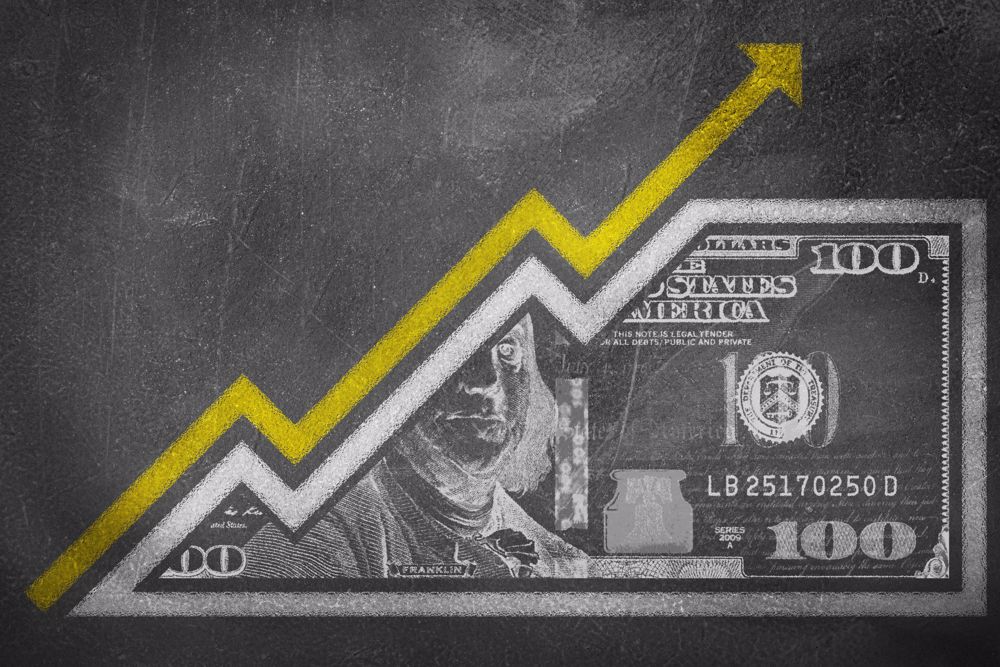We see its manifestations at the gas station, on the shelves of the grocery store and on your utility bills: inflation has arrived. There aren’t too many aspects of life that seem to impact just about everyone; inflation is a rare exception. Virtually every metric shows that prices are higher today than they were a year ago. Indeed, according to the most recent data from the Department of Labor, the Consumer Price Index jumped 7% in December, 2021 compared to the same month in 2020. That’s the biggest year-over-year growth since 1982. And the month before that, the CPI was up 6.8% compared to the previous year. It helps explain why as many as 45% of Americans are encountering some kind of financial hardship as a result, as are 70% of low-income households, based on a Gallup poll.
As a high net worth individual —or their financial advisor— the effects of a more expensive grocery bill or how much more it costs to heat a home may not be a budget buster. But as someone who understands the value of a dollar and wants to increase your buying power, inflation is an economic condition that should concern you. It also warrants the need to protect yourself and retain more flexibility over how you use your money.
What’s causing inflation? As you might suspect, it’s a product of many different factors.
Cash availability
As we noted in a recent article, more people these days have more money to spend. In April 2020, for example, the personal savings rate reached 33%, CNBC reported at the time from Bureau of Economic Analysis data. Part of the reason for this is employers are raising salaries — in some cases substantially. As the Pew Research Center found, weekly wages in the food services sector were over 18% higher during the second quarter of 2021 compared to the same period in 2020. And in the information and management industries, wages were up 12.3% and 12%, respectively.
People have also been saving more. As the Federal Deposit Insurance Corporation reported in June 2020, banks and credit unions received approximately $2 trillion in deposits during the first half of 2020. To put that into perspective, the $865 billion that financial institutions received in April alone set a new record. The previous all-time high was for a full year, CNBC reported.
Combined with the fact that fewer Americans were out and about buying things during the government-mandated lockdowns amid the global pandemic, pent-up demand is now manifesting itself.
Elevated demand
Because so many Americans have more cash on hand, they’ve been taking advantage of it. Many retailers have seen a surge in customer volume. During the holiday season, for example, Americans anticipated spending more on gifts than they did in 2020, averaging roughly $890 overall, according to Gallup polling. That’s a striking comparison to the $616 average amid the Great Recession.
In November, retail sales rose, up 14% from 12 months earlier, the Census Bureau reported.
Low supply
On its own, high demand is generally considered to be a good thing. It’s an indication of a vibrant economy, which is important since so much of the U.S. economy’s valuation stems from consumer spending. It’s when robust demand is combined with limited supply that problems arise. This is the situation that many employers are facing. Per economics 101, when supply diminishes and demand rises, prices go up to help temper demand. That’s what is happening with so many items. From bacon to ground beef to lumber to fuel, prices are up across the board.
Diminished productivity
Part of the reason why supply is as low as it is has to do with business owners being unable to keep up with demand. With millions of Americans deciding to leave their jobs to pursue other opportunities — a trend that’s led to the so-called “Great Resignation” — employers are doing everything they can to find more workers. This is one of the reasons why salaries have risen in so many industries; it’s an attempt to encourage more individuals to apply. Unfilled positions naturally wind up reducing output, resulting in longer wait times and backorders for items that are traditionally well stocked.
Also affecting lower volume are COVID-19 protocols established by the Centers for Disease Control and Prevention. They encourage people who are diagnosed with the disease — or exposed to someone who has it — to self-quarantine for several days.
Bottom line: Heavy demand is chasing after moribund supply, spurring the growth in prices that’s synonymous with inflation.
More printing of money
Yet another contributing factor to rising inflation has to do with the Department of the Treasury printing more money. Amid the pandemic, when businesses were forced to suspend operations to reduce the spread of the coronavirus, millions of Americans wound up losing their jobs. The unemployment rate skyrocketed from 4.4% in March of 2020 to nearly 15% a month later, according to the Department of Labor.
In response, lawmakers passed a number of stimulus packages, which supplied millions of Americans and business owners with checks pending eligibility. The CARES Act alone was $3.4 trillion. With more cash available, the less valuable it generally becomes because it’s less scarce.
These are just a handful of the factors that have contributed to the hyperinflation environment. And it doesn’t look like it’s going away anytime soon. While some economists expect prices to subside before 2022 ends, others anticipate it to last much longer.
With your dollar buying less, asset flexibility is of utmost importance. That’s why you may want to take advantage of life insurance premium financing. If you have a substantial life insurance need, Leveraged Planning® allows you to buy coverage without having to liquidate your assets or materially change what your money is being used for. It’s ultimately a tool that gives you more control by putting you in charge of your cash flow. Contact us today to learn more.


